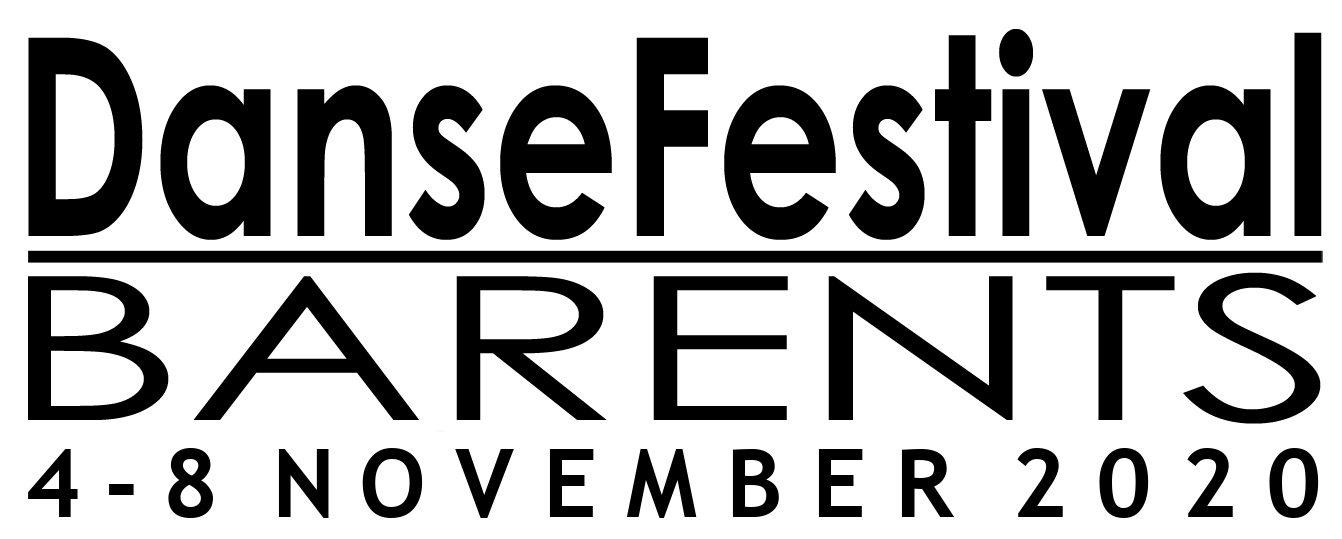We are here together
Carte Blanche
Thursday 10 November 7.30 p.m., Ole Olsenssalen, Arctic Cultural Centre
A co-production between the Bergen International Festival and Carte Blanche.
Photo: Helge Hansen / Carte Blanche
We are here together
Embodiment, cannibalism, ritual, the movement of the masses, the school of fish-movement, the lingering and sudden shift in another direction. Glitter, savage and spirit – the ghost of the masses. WE ARE HERE TOGETHER.We are here together; you, the audience with names, bodies and opinions, coming from your different angle. We are dancers, technicians, choreographers and administrators who was here already before. We come from different starting points and meet in this place, at this time, now, and this is where our collective movements start. You sit on your chairs, thinking, sensing and being moved, while we are on stage moving you – and ourselves.
We have invited two exciting choreographers for our double bill We are here together. Mia Habib and Marcelo Evelin, have a great appetite and willingness to both confront themselves and others and to challenge other peoples’ meanings as well as entering into other peoples’ bodies.
In their pieces Gjallarhorn and The Who of Things, Habib and Evelin both have a raw, naked choreographic language. Their pieces may at first glance look unrefined; however, they are cleverly implemented and the choreographers work actively, consciously and consistently to keep the direction of their movement language until the place it meets with an audience. Their body contains memories and thoughts, it has a history, and it has lived in a ritual. That body exists in a mass, and it is wild!
Carte Blanche, known for its hospitality, willingness, ability and appetite to meet others’ ideas and ways of thinking and to transform them into thought-provoking and engaging performances. We have set the table for a wonderful artistic meal! You are welcome.
Gjallarhorn
“… fate is heard in the note of the Gjallarhorn …” (Voluspå)
When the Gjallarhorn of Norse mythology is heard, danger is about and all those who sleep are awakened – even the gods. Its vibrations carry in the worlds of men and gods alike, and onwards down into the underworld. The horn marks the start of Ragnarrok, the end of the world and the renewal, as told in the Norse mythology’s Volupspå. Inspired by seismic activity, Norse mythology, Haugtussa by Arne Garborg and group rituals, Mia Habib and the Carte Blanche dancers explore which primordial forces are activated when fundamental changes in the physical world we live in occur.
“Yggdrasil shakes, and shiver on high” (Voluspå)
I 1895 Arne Garborg wrote the ode Gumlemål as a central part of his collection of poetry Haugtussa. The ode is presented in the oldest form we find in the Edda collection, and in the ode, Gumle speaks and incites mobilisation and Raknarok. Through the ode Arne Garborg levelled sincere socio-political criticism at the current power elite. In Gjallarhorn Habib is using Norwegian cultural heritage and the greatest forces of nature as a starting point for her warning.
“The sun turns black, earth sinks in the sea, the hot stars down from heaven are whirled; Fierce grows the steam and the life-feeding flame, till fire leaps high about heaven itself.” (Voluspå)
The Who of Things
“There where the whole thing is human, human is a whole other thing” – Eduardo Viveiros De Castro, anthropologist
The Brazilian Indians thought of everything in the world as human: The stones, the trees, the sky and the rain existed for them as an embodiment of humanity. They also engaged in the practice of cannibalism, eating the flesh of their enemies, their masters and the people they honored, in order to preserve “the other” within themselves.
The Who of Things departs from the metaphor of anthropophagy – or subjective cannibalism – to trigger the idea of the other within us. Referring to rhythm as language and ritual as performativity, the piece approaches ecosystem as an organization of life forms, from the complexity of a beehive to the savage herd of beasts.
Beyond individualism in the misguided notions that preserve colonialism throughout the ages, we are searching for a common ground, the condition of togetherness, and an expanding level of humanity for all beings.
Varighet: 1 t 40 min inkl. pause
Cast
Choreographers: Mia Habib*, Marcelo Evelin**
Costum design : Indrani Balgobin* & Marcelo Evelin** Lighting design: Ingeborg Staxrud Olerud
Sound design/music: Gunnar Innvær* & Sho Takiguchi**
Dancers: Caroline Eckly, Guro Rimeslåtten, Núria Navarra Vilasaló, Sara Enrich Bertran, Irene Vesterhus Theisen, Miryam Garcia Mariblanca**, Ole Martin Meland, Christopher Flinder Petersen, Mathias Stoltenberg, Timothy Bartlett, Hugo Marmelada, Dawid Lorenc, Harald Beharie, Jack Lorentzen
*only Gjallarhorn **only The Who of Things
About Carte Blanche - The Norwegian National Company of Contemporary Dance
Established in Bergen in 1989 and with its home base in Studio Bergen, the company tours both in Norway and internationally throughout the year. The ensemble consists of 12- 15 dancers of many nationalities around the wold, particularly known for their strong stage presence, high technical abilities and their individual creativity. Furthermore, Carte Blanche has a technical- and an administration department of 14 people in total. New programmes are created every season and the older ones re-staged. The Company has previously worked with Norwegian and internationally renowned choreographers, and woks with artists that has a critical eye on the society and that manages to express this through the dance. By allowing the dancers to exploit the privileges a publicly owned company gives, Carte Blanche enables the artists the possibility to grow. This way Carte Blanche creates an exciting and unique repertoire of high quality, underpinning the company’s goal to be a forerunner of innovation, presentation and development of contemporary dance in Norway and abroad.
Carte Blanche AS is owned and funded by the Ministry of Culture, Hordaland County Council and the City of Bergen.
www.carteblanche.no
